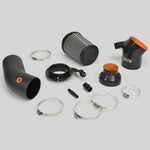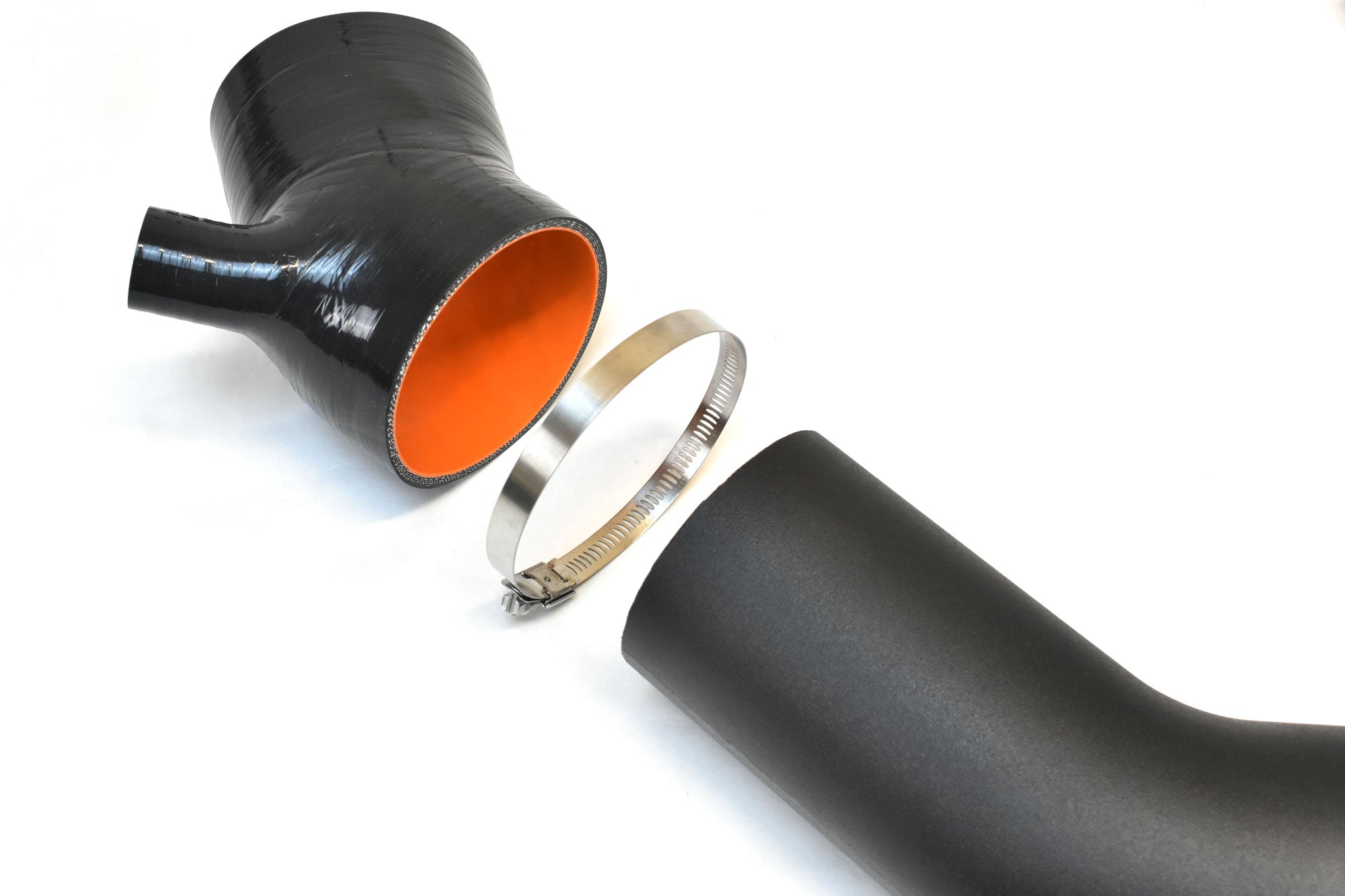
The SXTH Element Engineering Elantra N Open Flow intake is the perfect start to modifying your Elantra N.
Fits ALL 2022-2025 MY.
Attention 2024-2025 - Hyundai has added a crankcase ventilation sensor not previously found in the 22-23 and this sensor has a 50/50% chance to trigger a CEL after intake installation. We are currently working on a fix and will include it in the kits once ready. Due to the increased flow of the SXTH intake system, the sensor will tell the ECU the ventilation tube is disconnected, even when everything is properly installed. This CEL is emissions related and does not affect the engine's ability to operate normally and make power normally.
This intake is HUGE compared to OEM to help with pre-turbo pressure drop and the open element filter lets you hear all the turbo noises!

Bolt On
This intake system is a 100% bolt-on install with no modification required. The Elantra N specific mounting bracket places the huge 4in air filter right in the path of the OEM air scoop path. Our filter adapter also includes a velocity stack for the intake tube.

The Intake Tube
Available in XPLE Plastic, our intake tube is 4 inches in diameter to relieve intake system pressure drop to help the turbo breathe as easily as possible. This material helps save weight too!

Air Flow
We extensively tested intake air temperatures developing this intake. Why no "heat shield?" Well, after placing temperature probes in multiple places in the engine bay, after numerous dyno runs and road trips, heat shields added no benefit to measured temperatures except when the car is sitting still. When driving at speeds, airflow into the engine bay is so abundant, intake air temperatures measured in the intake system differed by only 2-3 degrees compared to our closed box system. So if you are looking for all the noise and a better price, this is the system for you.

Couplers & Clamps
We use the highest quality 5-ply silicone hoses and worm gear clamps for our tubing connections. The hoses are also designed in the computer for perfect fitment.


